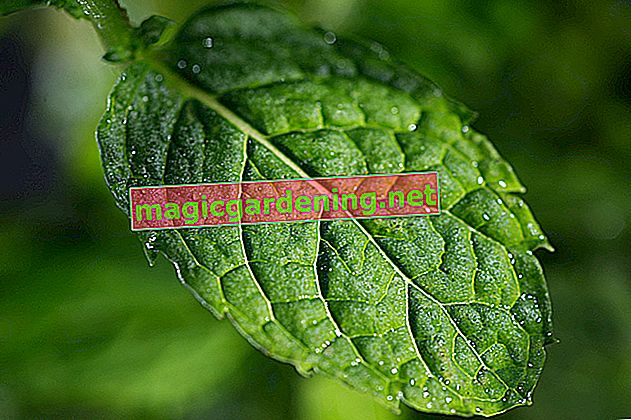
The best light and temperature conditions at a glance
In contrast to classic Mediterranean herbs, the need for sun rays is limited with mint species. This is how the optimal location should be:
- partially shaded location, without blazing midday sun
- warm and protected from rain
- like to be airy so that water droplets dry off quickly
also read
- The motherwort blooms profusely at this location!
- A great lemon balm thrives in this location
- Fight powdery mildew on mint with natural means
A good place for mint, for example, is under tall deciduous trees. The canopy of leaves protects the herb plant from pounding rain and at the same time lets in enough sunshine.
The best soil quality for mint
The right light and temperature conditions alone are not enough to attract the best possible growth from a mint. So that it happily stretches its roots in beds and tubs, this potting soil is essential:
- nutrient-rich and humus
- like a loamy-sandy consistency
- fresh and moist, without the risk of waterlogging
- well permeable
- A pH value around 7 is ideal
In the large bucket, loose herb soil meets the requirements when it is optimized with sifted compost and horn shavings. (€ 6.39 at Amazon *) In addition, aggregates create the desired permeability. These include lava granulate, (€ 10.95 at Amazon *) perlite, expanded clay, (€ 17.50 at Amazon *) coconut fibers and quartz sand. Drainage made of coarse, inorganic material is essential.
Tips & Tricks
The best location for mint has had its day after 3 to 4 years at the latest. Then it is important to choose a new planting site in the garden to prevent disease. For potted plants, the time has already expired after 2 years, as the vessels are completely rooted. Repotting in good time preserves the vitality of mint for many years.
GTH







